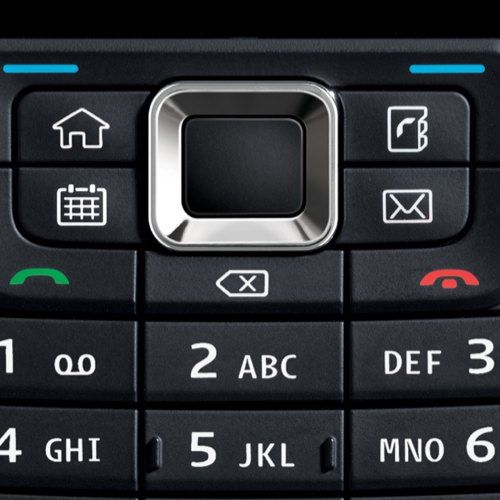When the Nokia E50 rocked up mid-2006, it was seen as a capable replacement for the legendary 6310i, a phone still seemingly favoured by crusty old business bods. This Symbian Series 60 smartphone was the closest any Nokia handset had come to matching the 6310i’s straightforward design, epic battery life and user-friendliness. But if there was one major criticism, it was the remarkable lack of high speed connectivity options.
Our quick take
The E51 is a vast, vast, improvement on the solid but unspectacular E50.
If you don’t want the intrusive bulk of a QWERTY-packing smartphone but you’re still in the market for a simple-to-use, highly connected and messaging-friendly smartphone then we can’t recommend the E51 strongly enough.
Although you could argue the camera is a duffer, nit-picking aside, the E51 is damn hard to fault.

Nokia E51 mobile phone - 4.5 / 5
| FOR | AGAINST |
|---|---|
|
|
Thankfully this oversight has been addressed with its follow-up the E51 with HSDPA and Wi-Fi now on-board. If you’re looking for a close comparison, then this smartie is essentially the E65 slider in candybar form, topped-up with HSDPA.
And like the E65, the E51 is impressively built with a metal-plated trim and battery cover. It’s also incredibly slender and great to handle. While it won’t completely seduce you with its looks, compared to the prosaic E50, it’s still a classy and elegant handset.
The E51 is simply a joy to operate. Its front spacious keypad is teeming with shortcuts galore with dedicated buttons for firing up email (if you have more than one client set up you can target a specific account), Bluetooth, calendar and contacts. Factor in the two customisable soft keys and the Symbian standby screen and pretty much all your favourite and important functions are but one click away.
The important business of syncing the phone with all your Outlook gubbins is also pretty trouble-free. You can transfer and manage all your contacts, calendar entries, tasks, etc., via Nokia’s bundled PC Suite software and the procedure is straightforward.
If you have a web-based email account like Gmail or Yahoo or a home-based ISP client then setting up email is a breeze. Nokia has installed a Setting Up wizard that takes all the faff out of entering all that outgoing and incoming server guff, so just your email address, username and password is required. However if you’re hooking up with your work’s Exchange Server for push email capabilities then you might want to get pally with the IT officer. Naturally, a QuickOffice suite is embedded so you can easily view Word, Excel and PowerPoint document attachments.
The QVGA-quality 2-inch screen is sharp and bright, brimming with 16-million colours and this seems to be the standard now for mid-range and beyond Nokia handsets. However, its size does restrict the view a tad when web browsing but nothing too major. Now it has fast HSDPA and Wi-Fi connections download speeds are brisk and you can either view web pages in full desktop glory (aided by Nokia’s marmite MiniMap navigation technique) or compacted to neatly fit the screen. Abuse the web over Wi-Fi and the battery will drain quite quickly. Otherwise used sparingly and the E51 will last a number of days before needing a re-charge.
As a business-class phone, Nokia has understandably toned down the E51’s multimedia potential but there are nevertheless still a host of features to muck around with. The fixed focus 2-megapixel lens shoots in a 1600 x 1200 pixel resolution so it won’t have you clamouring for the photo printer. Picture quality is average and good enough for MMS, wallpapering and blogging. Video capture resolution is higher than expected at 320 x 240 pixels but is compromised by the 15fps, so is dogged with judder and drag.
You probably wouldn’t expect to see a business-style handset to excel on the music front but the built-in player is particularly skilful, sounding dynamic with help of equaliser sound boosters. There’s even support for Stereo Bluetooth and should you tire of your tunes, an FM radio is ready to entertain. The 130MB wodge of user memory is more than helpful but is dutifully backed up by a non-hotswappable microSD card slot under the battery bonnet. We got a 1GB card with our review sample but if you want to load the E51 with more than 250 average-sized MP3 songs you will need to up the capacity.
To recap
The E51 is a class act. It has all the Symbian smarts, connectivity and messaging features you could hope for, all wrapped up in a tasty svelte frame
